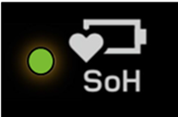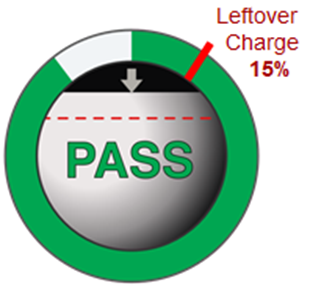Mar 2024 - Article
Making the Charger ObsoleteBatteries need chargers and Cadex turns this necessary evil into a Diagnostic Battery Management system to make the performance transparent to the user. The Universal Supervisor Charger (USC) works in standalone mode and connects to a host to view the performance of a smart battery. Logistics enable the full use of each battery with call to replace before failure, governed by the Target Selector. |
 “I need a simple charger, dammit” |
 “Let me show what our charger can do” |
The USC forms a risk management system that assures Minimum Operational Reserve Energy (MORE) for each battery in a charger that runs without user intervention with CadexLink software.
|
The USC validates battery performance with a lit green SoH Light; amber calls for calibration or replacement. The charger also features AirShip to set Li-ion to 30% charge for shipment. Storage optimizes battery life with charges levels of choice. |
 |
The USC features field-replaceable battery adapters to charge lithium- and nickel-based batteries side-by-side, a platform that will never be obsolete. Typical uses are Defense, Healthcare, Public Safety, Logistics, as well as drones, robots, mining, filming and rental places.

USC clients are not only battery users but more likely device manufacturers
CadexLink software transforms the standalone charger into a battery care system. The Local System connects by USB; the Fleet Manager uses Ethernet or Wi-Fi to store historic data in the CadexCloud.

Cloud Analytics works in standalone mode, connects to a host, and stores date in the cloud.
A modern battery supervisor must be cost-effective and simple to operate. The system illustrated below demonstrates the USC in a standalone charger with option to view battery status in Level 2 and full Cloud Analytics with Level 3.
 |
User: Level 1 In standalone mode, a modern charger validates the energy requirements for a mission with a lit green SoH Light. Amber requests battery calibration or replacement. Pass/fail default setting is 80%, adjustable by the user. |
 SoH Light |
 |
Supervisor: Level 2 Connecting the USC to a PC reveals battery status by the Fishbowl icon. Of importance is Leftover Charge that should be 10–20% at the end of a day. Adjustment can be made by the Target Selector. Cloud Analytics in Level 2 is optional. |
 Fishbowl |
 |
Cloud Analytics: Level 3 Cloud Analytics offers trend analysis on battery fleets by observing Leftover Charge and Energy Used to derive Remaining Useful Life of a battery. |
 |
Scalability options that can be applied in the file with CadexLink software
A Target Selector is unique in a charger. Defaulted to 80%, the setting can be changed by the host to get the “sweet spot” between economy and system reliability. If Leftover Charge is low, the target should be set higher to increase energy reserves. However, if plenty of reserve is available before charge, the setting can be relaxed to keep batteries in service longer. The Target Selector thus forms a user-settable risk management system in batteries; an analogy is checking fuel reserves in an aircraft when landing.
